My goodness the health news has been dire the last few weeks. Ebola, Enterovirus D68….and we haven’t even hit flu season yet.
I’ve been a bit surprised by the number of generally rational people I know that are suddenly in a panic over germs. Can we discuss?
These diseases, even the flu, can be deadly and those who work with compromised kiddos need to be particularly vigilant about keeping germs at bay. That said, recommended precautions are manageable and should be part of your every day whether that be in a medical, school or even home environment. And while Ebola and Enterovirus are currently stealing headlines, the majority of us need to focus on the more typical (and contagious) viruses that we see every year.
You
Flu shot: If you can get a flu shot, get a flu shot. Even during years where the match of guessed flu to actual flu is poor, it can still decrease the severity of your symptoms. And it’s a kindness both to yourself and those you work with.
Hand washing: This is your greatest line of defense against everything. If you can see dirty/yucky stuff, you need to use good ‘ol soap and water. Be sure to lather well, and long enough. Those with rings, try to get under there too.
Hand sanitizer: This is a great option if you can’t see any nasty stuff. The alcohol content should be between 65-95% for greatest efficacy.
Hands should be cleaned before and after patient contact. School based therapists, I would consider each child/group your patients too.
And if you’re sick, stay home. Please.
Materials
Let’s really consider the toys and materials we use in treatment because those things will be teeming with germs by the middle of the winter if we don’t attend to them. First, let’s get some definitions straight:
Cleaning: this can be accomplished with a mild detergent and water
Sanitizing: you need bleach or another sanitizer for this
Disinfecting: requires bleach or ammonia (disinfectants can sanitize, but it doesn’t necessarily work the other way around)
Most toys can be cleaned regularly and sanitized periodically unless there is obvious contamination going on. Toys that are mouthed, as well as utensils, need to be sanitized after use. Disinfecting is needed for things like diaper changing areas (after each change).
For those of you who love the thrift store (and who doesn’t?), be sure you are cleaning and/or sanitizing your finds before you bring them to your little ones.
So how do we do this?
To simply clean toys, you can use soap and water or a cleaning spray. Dry with a clean paper towel.
Wipes are another option, but realize that wipes remove bacteria and don’t necessarily kill it. This means that you don’t want to re-use a wipe, let’s say between the table and a toy, because it may transfer the bacteria.
To sanitize toys you will need to soak them in a solution of bleach (1 tsp/1 qt or 1 tlb/1 gal) for 10 min, drain, rinse and allow to dry overnight. Another option is to use vinegar OR peroxide (do not mix). Spray on the toy, let sit for 10 min and then wipe dry with a paper towel.
Another option is to run plastic toys through the dishwasher on the top rack (obviously easiest with toys at your own home).
For soft toys or fabric, run them through the washing machine at a temperature of 140 degrees or higher. Dry them completely in the dryer on the hottest setting.
A few words on allergies:
Peanut allergies abound these days and need to be taken seriously. Studies show that spray cleaners and products like Lysol wipes worked better than just soap on water on items like tables. Soap and water to clean hands however was very effective. Note: If you have any peanut butter residue on your hands, hand sanitizer will not effectively remove it. If you don’t have soap and water access, you are better off using a baby wipe.
A few additional, gross facts:
Colds
These suckers can seem to last forever and once they start, seem to run rampant.
| Surface | How long it can survive |
| Non-porous (stainless steel, plastic) | Several days (though less potent after 24 hrs) |
| Hands | 1 hr. |
Respiratory Syncytial Virus (RSV)
This is a major cause of respiratory illness in little ones.
| Surface | How long it can survive |
| Non-porous (countertops) | 6 hrs. |
| Cloth/paper | 30-45 min. |
| Hands | 20 min. |
Flu
The flu can survive as droplets in the air for several hours and low temperatures increase its survival.
| Surface | How long it can survive |
| Non-porous (countertops, plastics, stainless steel) | 24 hrs. |
| Tissue (yuck) | 15 min. |
| Hands | Falls dramatically after 5 min. |
The information contained in the post was gathered from the CDC, Mayo clinic and other reputable health sites, but is not meant to replace work protocols or your own research.


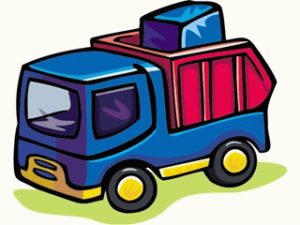
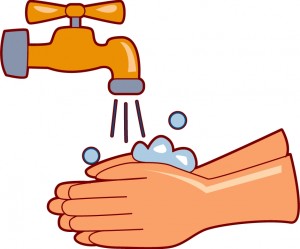
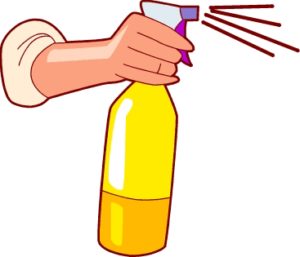
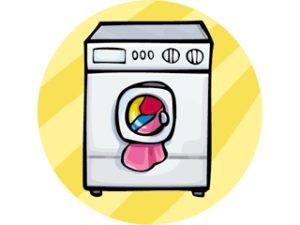
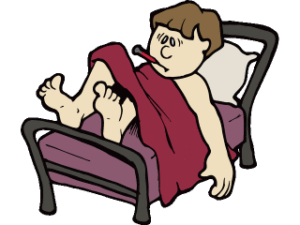




This Post Has One Comment
Excellent reminders!
Comments are closed.